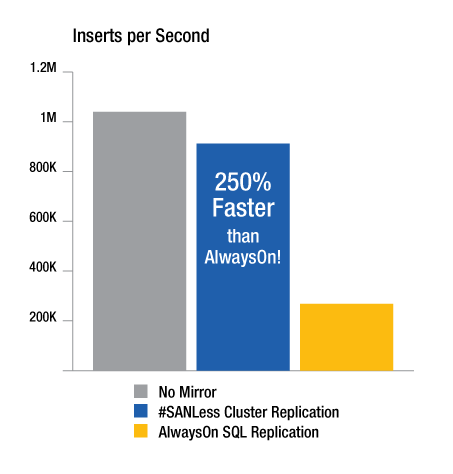Award-winning software provides high availability and disaster protection for important applications in Azure
![]() SAN MATEO, Calif. – SIOS Technology Corp. (www.us.sios.com), maker of SAN and #SANLess clustering software products, today announced that its SIOS DataKeeper Cluster Edition software is Microsoft Azure certified and now available in the Azure Marketplace. The new SIOS offering is the only Azure certified software that enables customers to create a SANLess high availability cluster in Azure using Microsoft Windows Server Failover Clustering.
SAN MATEO, Calif. – SIOS Technology Corp. (www.us.sios.com), maker of SAN and #SANLess clustering software products, today announced that its SIOS DataKeeper Cluster Edition software is Microsoft Azure certified and now available in the Azure Marketplace. The new SIOS offering is the only Azure certified software that enables customers to create a SANLess high availability cluster in Azure using Microsoft Windows Server Failover Clustering.
By adding SIOS DataKeeper software to Windows Server Failover Clustering, customers can quickly and easily help protect business-critical Windows environments from downtime and data loss in a cloud or a combination of physical, virtual, or hybrid cloud environment. Now, for the first time, applications depending on SAN-based Windows server failover clusters for protection can be moved to Azure and achieve the more comprehensive high availability protection they need.
“We are pleased that Microsoft has chosen to certify and include SIOS DataKeeper in the Azure Marketplace. By providing fast, convenient access to SIOS DataKeeper software, our Azure Marketplace offering enables customers to deploy their important applications such as SQL, SAP, and Oracle in Azure with the same high availability protection they have in traditional physical server environments,” said Jerry Melnick, COO of SIOS Technology.
“Products like SIOS DataKeeper are pivotal in the cloud transformation,” said Vibhor Kapoor, Director of Product Marketing, Microsoft Azure. “By providing the essential high availability protection for critical applications that enterprises need, SIOS and Azure are enabling customers to take their journey to the cloud with confidence.”
Along with its Azure Marketplace offering, SIOS provides an informative, step-by-step guide to creating a high availability failover cluster to protect SQL Server in Azure IaaS written by Microsoft MVP, David Bermingham. The SIOS DataKeeper offering in the Azure Marketplace is at:
http://azure.microsoft.com/en-us/marketplace/partners/sios-datakeeper/sios-datakeeper-8-bring-your-own-license/
About SIOS Technology Corp.
SIOS Technology Corp. makes SAN and #SANLess software solutions that make clusters easy to use and easy to own.An essential part of any cluster solution, SIOS SAN and #SANLess software provides the flexibility to build Clusters Your Way™ to protect your choice of Windows or Linux environment in any configuration (or combination) of physical, virtual and cloud (public, private, and hybrid) without sacrificing performance or availability. The unique SIOS #SANLess clustering solution allows you to configure clusters with local storage, eliminating both the cost and the single-point-of-failure risk of traditional shared (SAN) storage.
Founded in 1999, SIOS Technology Corp. (www.us.sios.com) is headquartered in San Mateo, California, and has offices throughout the United States, United Kingdom and Japan.
View this article at DRJ.com

